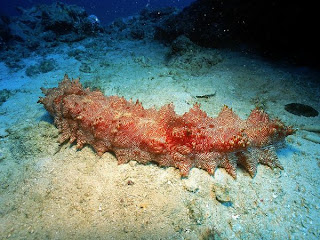Longhorn12
Monday, October 24, 2011
Why do we study ocean waves?
The Japanesse people and other people who are affected by tsunamis. They need to be more aware and warned when tsunamis are going to happen. People are already warned if there is an earthquake but it is not good enough. That is why it is important to study the ocean and their waves. If we had a better advance warning system we would have less deaths.
Thursday, October 20, 2011
Coastal Animals
The Marine Iguana only lives at the Galapagos Island. The Iguana can dive over 30 ft into the water. It can live and eat food in the sea witch is cool because no other lizard can. When the lizard is on land it has to be on the watch for birds because the birds eat the lizards. When the waves crash into the rocks they grip the rocks with their sharp claws.
Wednesday, October 5, 2011
World Current
The wind blows the water wich makes currents, but the coriolas effect also takes place. The equator is why we have warm currents because it changes the water teperature. The polar regions is why we have cold water currents. When the earth rotates wich makes wind blow the currents.
Friday, September 30, 2011
The Coral Reef
Red Mouth Grouper Vs. The Lion Fish
The red mouth grouper and the lion fish are enemies. They both feed in the same areas so they fight to try to protect there feeding grounds. The red mouth grouper are big, slow, and have a huge mouth. The Lion Fish have red, white, and black stripe spiky venomous fins.
The red mouth grouper and the lion fish are enemies. They both feed in the same areas so they fight to try to protect there feeding grounds. The red mouth grouper are big, slow, and have a huge mouth. The Lion Fish have red, white, and black stripe spiky venomous fins.
Monday, September 26, 2011
Euphotic Aphotic Disphotic
In the Euphotic zone I picked a lantern fish. The lantern fish is a small fish that eats plankton. It can produce its own light. Thousands of lantern fish flash there tails at different times to confuse there pretaders. They also send light signals to comunicate with each other. There are over 200 species of lantern fish.
In the Aphotic zone I picked the sea cucumber. It is like starfish and sea urchins. There are 1,250 known species, and many of these animals are indeed shaped like cucumbers. All sea cucumbers are ocean dwellers, though some live the shallows and others live in the deep ocean. They live on the ocean floor. They eat algae.
In the Disphotic zone I picked the Angelshark. They live under the sand during the day and they hunt for food during the night. The have a long thin body and fins that look like wings. They live in warm oceans, and they like to eat random fish and squid. They can grow up to 5 feet long.
In the Aphotic zone I picked the sea cucumber. It is like starfish and sea urchins. There are 1,250 known species, and many of these animals are indeed shaped like cucumbers. All sea cucumbers are ocean dwellers, though some live the shallows and others live in the deep ocean. They live on the ocean floor. They eat algae.
In the Disphotic zone I picked the Angelshark. They live under the sand during the day and they hunt for food during the night. The have a long thin body and fins that look like wings. They live in warm oceans, and they like to eat random fish and squid. They can grow up to 5 feet long.
Thursday, September 22, 2011
J- Perfume evaporates off a woman's skin, and is smelled by someone several feet away.
The key concepts would be, 2 Diffusion, 3 Dissolving, and 4 Latent Heat.
The perfume would spread throughout the particles in the air. Which would be diffusion.
The skin would absorb the chemical of the perfume. Which would be latent heat.
The perfume would go up your nose and dissolve. Which would be Dissolving.
The perfume would spread throughout the particles in the air. Which would be diffusion.
The skin would absorb the chemical of the perfume. Which would be latent heat.
The perfume would go up your nose and dissolve. Which would be Dissolving.
Friday, September 16, 2011
Seasonal Seas
The giant crab is not on the bottom of the food chain, but it is not at the top. Crabs are carrion eaters which means they eat the leftovers of bigger animals prey. They also eat pieces of dead fish and what ever winds up on the ocean floor. Fish with powerful bone crushing jaws eat crabs. Birds will pick the crabs up and drop them on rocks to crack their shells.
Subscribe to:
Comments (Atom)





